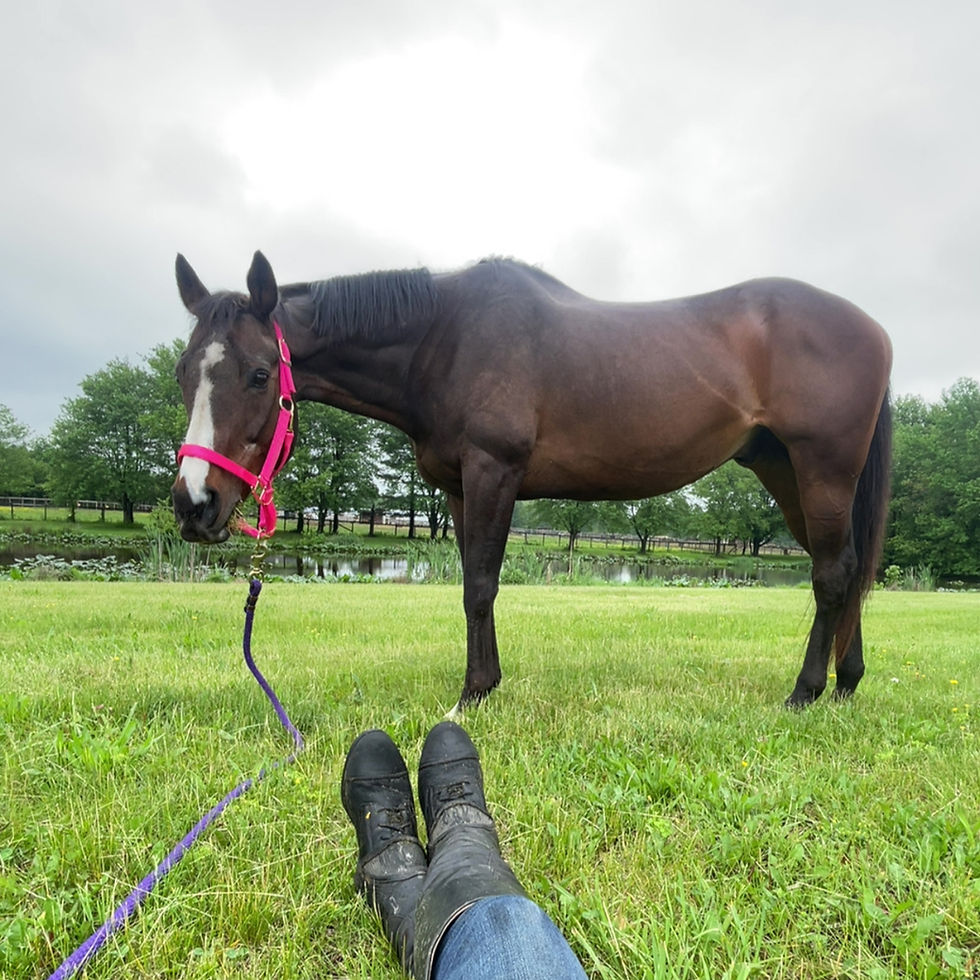Not Broken, Just Used: Setting Soundness Expectations for OTTBs
- Autumn Fiordland

- Jun 23
- 3 min read
Updated: Jul 18
Off-Track Thoroughbreds (OTTBs) are known for their athleticism, heart, and work ethic — but they’re also known for coming with a bit of “mileage.” And when you’re shopping for or adopting your first OTTB, it’s easy to get overwhelmed by terms like “old bow,” “mild arthritis,” or “previous chip.”
So let’s set the record straight:
Just because an OTTB has a medical history doesn’t mean they’re broken. It means they’ve been a professional athlete — and like any athlete, they carry the marks of their training.

What’s “Normal” for a Horse Off the Track?
Racehorses are incredibly well-conditioned, high-performance animals who start training young and work hard. As a result, many of them retire with some level of:
Old soft tissue injury (like a bowed tendon)
Early arthritic changes in joints
Slight conformational imbalances from race training
Thin soles or low heels due to race shoeing
Minor bone changes visible on x-rays (like chips or remodeling)
None of these are immediate disqualifiers. In fact, they’re incredibly common, and in many cases, they’re completely manageable — especially in lower-impact second careers like trail riding, flatwork, light jumping, or even mid-level eventing and dressage.
The PPE Isn’t About “Perfection”
It’s natural to want a horse who will be sound and happy in their new life — that’s a good instinct. But remember: a Pre-Purchase Exam (PPE) is not about finding a flawless horse. It’s about:
Understanding what you’re taking on
Assessing what maintenance might be needed
Making an informed decision based on your goals and budget
Expecting a $2,500 OTTB with a full race record to pass a PPE with completely clean x-rays and zero blemishes? That’s unrealistic — and it causes buyers to pass on horses who are completely capable of fulfilling their new jobs with the right care.
💲 Why Soundness and Price Go Hand in Hand
The affordability of OTTBs is often tied directly to their vet history. A horse with old injuries, mild arthritis, or previous rehab needs will likely be priced accordingly — not because they’re worthless, but because responsible sellers know what’s fair.
The horse who does have clean imaging, proven performance, and low maintenance? That’s the unicorn everyone’s looking for, and it usually comes with a price tag to match.
So rather than holding out for perfection, look for potential — and manageability.
What to Look for Instead of “Perfect”
When evaluating an OTTB, here’s a more helpful checklist:
Is the horse sound for the job I want to do?
Are old injuries cold, stable, and well-managed?
Am I comfortable with any necessary maintenance?
Does the price reflect the findings?
Do I have support from a vet, trainer, or farrier to help me succeed?
If the answer to most of those is yes — that’s a win.
Final Thoughts
Buying or adopting an OTTB is about seeing what they can become, not punishing them for where they’ve been. If you go into the process expecting some blemishes but armed with good information and a solid support team, you’ll find that many of these horses have years of service — and joy — ahead of them.
Because at the end of the day, they’re not broken.
They’re just used — and ready to be loved again.







Comments